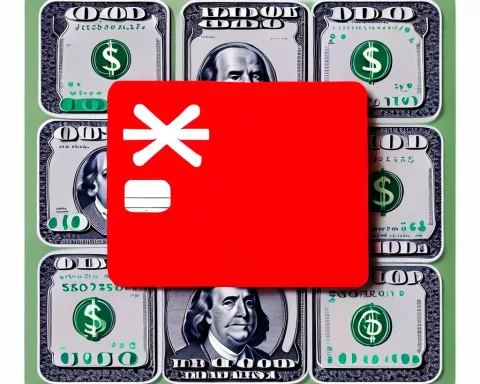President Trump’s new executive order aims to shake up the federal workforce. It puts a freeze on hiring, allowing only one new employee for every four who leave, to save money and boost efficiency. Elon Musk, leading the newly formed Department of Government Efficiency (DOGE), is helping guide this change amidst concerns about the budget deficit. While some see this as a smart move to make government work better, others worry it could lead to job losses and instability. As the nation watches, this partnership hints at a big shift in how the government operates.
What is the impact of the new executive order on the federal workforce?
The executive order mandates a hiring freeze, allowing only one new federal employee for every four who leave, aiming to enhance efficiency. It positions the Department of Government Efficiency (DOGE) as a key authority in staffing decisions, transforming federal operations amid budget deficit concerns.
A Bold Executive Order
In a groundbreaking decision, President Donald Trump recently unveiled an executive order designed to transform the landscape of the federal workforce in the United States. This mandate requires federal agencies to collaborate closely with the Department of Government Efficiency (DOGE) to optimize operations and significantly curb future hiring. Standing alongside Trump during this pivotal announcement was Elon Musk, the visionary head of DOGE, whose involvement has stirred both intrigue and controversy.
DOGE’s mission is distinct and ambitious: to identify and address inefficiencies within the extensive framework of the federal government. At a White House briefing, Musk painted a sobering picture of the nation’s fiscal realities, highlighting the staggering $1.8 trillion budget deficit and the increasing strain of interest payments on the national debt. His message carried a sense of urgency—without substantial reductions in spending, the United States risks facing severe economic challenges. Musk emphasized the critical nature of these fiscal measures, reinforcing the necessity of decisive action.
A central element of the executive order is its transformative approach to federal employment. The directive stipulates a stringent policy where only one new employee can be hired for every four who depart. Additionally, agency leaders are required to seek DOGE’s guidance before making any staffing decisions, effectively positioning DOGE as a key authority in federal human resources management.
Navigating Controversy and Criticism
The sweeping changes outlined in the executive order have not escaped scrutiny. Critics are vocal in their disapproval, likening Trump’s assertive measures to an unlawful consolidation of power and citing ongoing legal disputes as evidence of overreach. Concerns also circulate about DOGE’s expanded authority, especially regarding its access to sensitive financial data from the Treasury Department. Detractors fear that the agency’s capacity to halt aid programs and reduce workforce numbers could lead to instability.
Elon Musk, accustomed to public scrutiny, has defended his role in this government overhaul. Known for his ventures that have significantly benefited from government contracts, Musk has assured the public of his dedication to transparency throughout this restructuring process. His involvement has been compared to historical collaborations between government leaders and prominent industrialists, such as the alliance between President Franklin D. Roosevelt and Henry Ford during the New Deal era. However, unlike the New Deal’s focus on growth and job creation, this modern partnership aims to streamline and economize.
Musk’s participation in this initiative is both significant and controversial. As a figure synonymous with innovation and disruption, his entry into the governmental domain evokes both optimism and skepticism. On one hand, his record of accomplishments in industries like automotive and space exploration suggests he could drive substantial efficiency improvements. On the other hand, his financial interests in government contracts raise potential conflicts of interest that warrant careful consideration.
Broader Implications and Historical Context
The implications of this executive order extend well beyond the realm of federal employment. By limiting hiring and reducing government programs, the administration seeks to recalibrate the equilibrium between public sector expenditures and private sector growth. Historically, similar austerity measures have yielded mixed results, as seen in several European countries over the past decade, where public resistance and socio-economic difficulties emerged in response.
This initiative occurs at a time when the role and responsibilities of government are the subject of intense debate. The challenge of balancing a reduced government size with the provision of essential services echoes ongoing discussions about government’s place in modern society. Proponents of minimal government argue that excessive bureaucracy stifles innovation and imposes undue burdens on taxpayers. Conversely, advocates for a robust public sector contend that government has a responsibility to deliver comprehensive support services, particularly during periods of economic uncertainty.
In line with these discussions, the Trump administration’s emphasis on efficiency reflects a broader trend of applying business principles to governmental operations. This tactic, favored by some previous administrations, seeks to harness industry expertise to streamline processes and cut costs. However, it risks neglecting the complexities and nuances inherent in public governance, which often operate under different parameters than the private sector.
Cultural Reflections and Future Prospects
The current period of governmental transformation may inspire a new wave of cultural and artistic commentary, akin to the art movements that responded to political and social upheavals in the 20th century. As agencies navigate the demands of the executive order, artists and writers might capture the human stories behind these bureaucratic shifts, providing personal insights into the policy impacts on everyday lives.
As the nation observes this initiative unfold, the collaboration between Trump and Musk stands as a unique intersection of business acumen and political strategy. This partnership sets the stage for a potentially transformative era in U.S. governance. Whether it will lead to enhanced efficiency or unforeseen consequences remains an essential question, poised to shape the discourse on government operations and efficiency for years to come.
FAQ
What is the main purpose of President Trump’s new executive order regarding the federal workforce?
The executive order aims to reshape the federal workforce by implementing a hiring freeze, allowing only one new employee for every four who depart. This strategy is designed to save money and enhance efficiency within federal operations, particularly in light of the current budget deficit.
Who is leading the Department of Government Efficiency (DOGE) and what is its role?
Elon Musk is leading the newly formed Department of Government Efficiency (DOGE). The department’s role is to identify inefficiencies within the federal government and guide agencies in staffing decisions to optimize operations and reduce expenditures.
What are the potential criticisms of the executive order and the role of DOGE?
Critics express concerns over the concentration of power within DOGE and the potential for job losses and instability among federal employees. There are also apprehensions about the agency’s access to sensitive financial data and its ability to halt aid programs, which could have significant socio-economic repercussions.
How does this executive order compare to historical government initiatives?
The executive order reflects a trend of applying business principles to government operations, similar to past efforts like the New Deal. However, while the New Deal focused on growth and job creation, this current initiative emphasizes austerity and efficiency, raising questions about its impact on public services and employment.
What implications might this executive order have for future government operations?
This initiative could lead to a significant recalibration of the balance between public sector expenditures and private sector growth. As the government seeks to streamline operations, it may also spark broader discussions about the role of government, the provision of essential services, and the nature of public versus private sector responsibilities.
How might this initiative influence cultural and artistic commentary in society?
As the government undergoes transformation under this executive order, it may inspire a new wave of cultural and artistic works that reflect the human experiences and stories behind bureaucratic changes. Artists and writers could respond to the social and political upheavals, providing insights into how these policies impact everyday lives and shaping public discourse around governance and efficiency.










